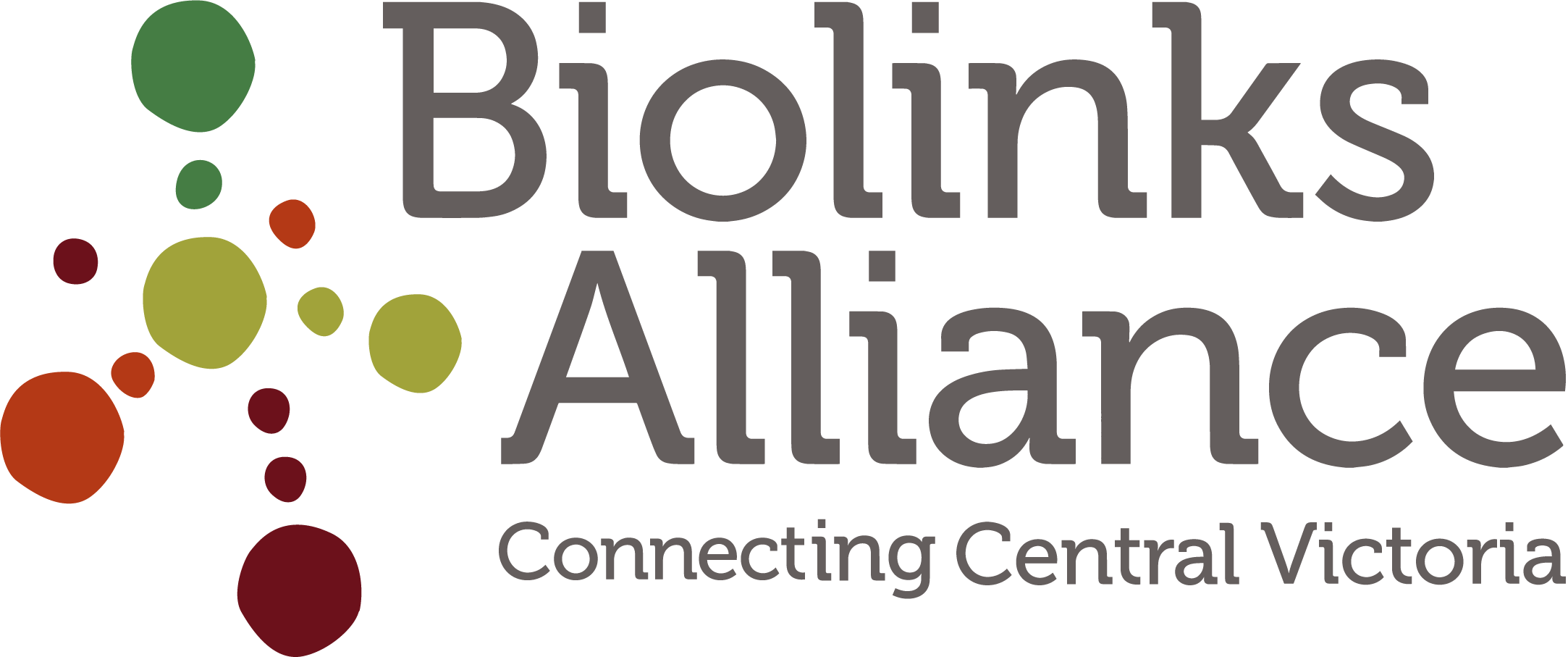Our path to restoration
While the nation grapples with the fear of losing iconic species like the koala - in the Macedon Ranges, remnant Swamp Gum habitat supports a now even-more critical population of koalas. Near Benalla, eucalypt forests and woodlands provide habitat for the critically endangered Regent Honeyeater, which lost much of its habitat in the NSW fires. And in the nearby Wombat Forest, Red-browed Treecreepers forage in Manna Gums, many of which were burnt further north.
Here in Central Victoria we must act now to protect and bolster our refuges with even greater urgency.
Our 2040 vision
The health of Central Victoria’s natural environment is being restored and its species are no longer in decline
“With the networks that Biolinks Alliance creates, we can change the future for our creatures and landscapes - from tragedy to restoration”
Sophie Bickford, Executive Director, Biolinks Alliance
Biolinks Alliance
Long before the Black Summer bushfires, concerned Central Victorians were looking for answers. Farmers asked why their soil quality was diminishing and their crops were less productive. Landowners wondered why their creeks were no longer flowing. Tree-changers wondered where the birdcalls had gone. Climate change - and how to safeguard against it - was on everybody’s lips.
These stories galvanised bush folk into action. In October 2010, thirty of those bush lovers came together in a historic Central Victorian house, surrounded by the life-giving environment they relied on for health, sustenance and industry. Biolinks Alliance was born.
Conservation of the 21st century
Within the vibrant scene of Australian conservation, Biolinks found a gaping need. While national parks and other organisations had protected millions of hectares and partnered with landowners to protect private land, species loss continued. Landcarers and bush loving volunteers toiled to protect their special places but soil degradation continued.
Despite this effort, Biolinks saw that the Swift Parrot was still living on the brink, the koala still foraging in dwindling habitat and the Brush-tailed Rock Wallaby still fighting for survival. What was missing in the conservation puzzle?
Biolinks identified one key factor. Lines on maps - man made boundaries at which responsibilities began and ended - had everything to do with humans and nothing to do with the land and wildlife they wanted to protect. Isolated habitats created a wonderful start for our animals but didn’t help them move across the land. There needed to be something more: something that supported landowners and community groups to implement a plan together - for the landscape, not just the paddock.
Biolinks Alliance was born to fill this critical niche in the Victorian conservation landscape. Since 2010 we have built networks and connections between organisations, people and fragmented pockets of habitat. Without us, the isolated and disconnected efforts of individuals and communities will continue to fail our species despite Titanic efforts. With us, they can achieve so much more.
Biolinks Alliance is the only organisation in Victoria dedicated to inclusive, large-scale conservation - designed to align and coordinate existing conservation efforts, and to bring in the planning and scientific know-how to ensure we all work smartly and succeed, together.
Why connectivity conservation?
In 2009 CSIRO scientists, led by Dr Veronica Doerr, released a study that found our wildlife moves through the landscape following particular patterns and that understanding these patterns would allow us to create linkages between habitats. This in turn would enable animals to escape wildfire and find seasonal food, nesting trees and a more genetically diverse range of breeding partners.
The scientists found that small woodland birds like Eastern Yellow Robins will explore in all directions for just over a kilometre from their home base looking for a new patch of bush (at least 10ha in size). But they need scattered shelter trees to use as ‘stepping stones’ for rest and protection from the predators. Even ground-dwelling mammals need these ‘stepping stone’ shelter-trees.
CSIRO then developed clear guidelines for creating habitat linkages, which Biolinks Alliance now shares with member groups such as Ashbourne Landcare’s Upper Campaspe Biolinks project, enabling their projects to be highly strategic.
Science informs us that these local connections need to occur at scales of over 400km or more, so that species can adapt to the changing climate.
NEXT: WHY YOU CAN TRUST US
Biolinks Alliance, born from a groundswell of concern ten years ago, has grown into an organisation that is taking up the challenge of protecting Central Victoria’s unique native habitat.




